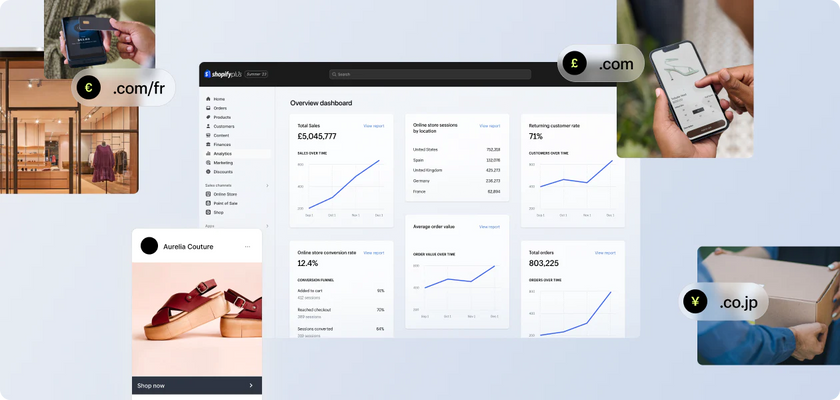Aug 13,2019 Shopify API
Optimising your site's meta descriptions

Along with meta titles, meta descriptions are a crucial part of on-page SEO. And yet it’s something a lot of brands neglect, whether that’s due to a lack of resources, time or SEO knowledge.
But what exactly is a meta description, and why are they so important? We take an in-depth look into the characteristics of good meta descriptions, with some actionable tips to help you optimise your brand’s meta tags.
What is a meta description?
A meta description is a type of meta tag that describes your web page to search engines and potential visitors. It sits underneath your meta title on a search engine results page (SERP) and is normally up to 155 characters in length.
In the HTML code for your page, the meta description looks like this:
<meta name="description" content="A page's description,
usually one or two sentences."/>
If you don’t enter a meta description manually, Google pulls in whatever content it can find to use as a summary – usually from the top of the web page.
Why your meta description is important
Although search engines say that meta descriptions aren’t a ranking factor, they’re still an incredibly important part of on-page SEO. While meta descriptions aren’t used in Google’s algorithms, things like click-through-rate (CTR) are factored in – and that’s something that your meta description can directly influence.
Aside from the SEO benefits, your meta description is your brand’s first opportunity to make an impression on potential customers. Why should they visit your site instead of one of the other hundreds of results? What will they see when they land on your page? This is your chance to sway users to click-through to your site.
How to write a good meta description
Much like social bios, or ad text, meta descriptions pose an interesting wiring challenge. Because you’re limited to how much you can say, it’s essential to get your message across in as few words as possible.
Here are some top tips for creating a great meta description:
Keep it short & snappy
Keep your meta descriptions as short and snappy as possible by avoiding overly long words, cutting out any redundant language and using ampersands instead of ‘and’. It’s about boiling your message down to its key components.
Although 155 characters is often described as ‘the optimal length’ for meta descriptions, Google often displays up to 300 characters. So, while it’s not essential to aim for the shortest option, make sure you get your key message across in the first 155 characters, as that’s usually all that users will see.
Include a call-to-action
Whether it’s a category page, product page or a blog post, it’s important to include a call-to-action in your meta description. Things like “Get a quote online”, “Shop online today” or “Find out more” help drive your customers to act, earning you those coveted click-throughs.
Make it unique
Don’t just copy your competitors’ meta descriptions and change the wording slightly. You want your descriptions to stand out on the SERP, not blend in with everyone else’s. Think about how you can make yours different, whether that’s with a different message or more interesting language.
And it’s not enough to keep your meta descriptions unique from your competitors’ – they have to be unique from each other, too. Although it’s tempting to copy and paste descriptions for similar pages, this does more harm than good. If you don’t have the time to write a unique description, you’re better off leaving it blank.
Include the focus keyword
When you search for something, you may have noticed that Google emboldens that search term in the results’ meta descriptions. This helps users identify the relevance of the page, so, whatever keyword you’re optimising for, make sure you include it in the meta description.
On the flip side, don’t include it too much – it will appear spammy, which can have a negative impact on your click-through rate.
Keep it simple, concise & readable
Above all, make sure your meta description is engaging and readable. Opt for the active rather than the passive voice, avoid jargon and ostentatious language, and proofread your copy to check for any errors. Only use technical language if it relates to the focus keyword.
Remember, you can’t assume users are well-versed on a subject matter or product, so it’s important to keep your language as simple and informative as possible.
Optimising your meta title tag
Unlike your meta description, your meta title tag is a ranking factor – which means you need to make sure you include the web page’s focus keyword. But don’t overdo it! Like your meta description, users can smell spam, so avoid keyword stuffing. Your title tag should also include your brand name, and should be no more than 60 characters in length.
In the HTML code for the page, your meta title will like this:
<head>
<title>Example Title</title>
</head>
Meta title tags are a huge factor in helping search engines understand what your web page is about, so make sure you take time to get them right. Working hand-in-hand with your meta description, these title tags act as a user’s first impression of your site, and will appear on SERPs, web pages and social media platforms.
Here’s a quick summary of how you can nail your title tags:
- Keep it under 60 characters
- Put the priority keywords first
- Include your brand name
- Avoid keyword stuffing
- Keep it unique
For more information about optimising your site’s search rankings, book a consultation with one of our experts.


